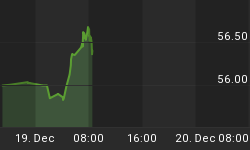With a billion dollars separating them, Elon Musk recently exceeded Jeff Bezos as the world's second-richest man. Currently, Tesla CEO and co-founder Musk is worth $201 billion, with a daily gain of $1.64 billion.
Yet, Tesla only became profitable in 2020, when it made $721 million profit. Up until then, Tesla was breaking records in car sales quarter by quarter, but never managed to eke out a profit.
That makes Tesla sort of the poster child for companies that keep attracting tons of money and investor interest despite their balance sheets. All they need is potential for growth and investors are willing to sacrifice profits today for hoped-for massive future gains.
What they’re looking for is a company that can steal market share. That’s why it doesn’t matter that Tesla lost $1,759 for every car it delivered in 2020.
In fact, some of the biggest companies, especially in the tech and lifestyle sectors, have yet to break even. One major multi-billion-dollar company has even said that it might never be profitable. Still, investors are on board.
Here are 3 of the biggest companies that fail to turn a profit:
#1 Airbnb (NASDAQ:ABNB)
Founded in 2008, Airbnb has never been profitable, but investors claim that the company's reinvestment is its key to continued growth.
Due to the pandemic, the company saw $4.6 billion in net losses in 2020; but the post-COVID economy could easily shape up to be one of the big winners.
According to a new survey by real estate data company Clever, 82% of Americans believe that Airbnb-ing their home is a good money-making strategy.
Revenue in the second quarter of this year increased nearly 300% year-over-year and exceeded the same period in 2019 by 10%. Still, net loss was $68 million, an improvement of $507 million compared to the second quarter last year.
#2 Uber (NYSE:UBER)
Eternally unprofitable and a major cash-burner, when Uber filed its IPO in 2019, it said that it might never make a profit.
Uber's operating costs amounted to over $3 billion in losses in 2018 -- it lost $8.5 billion in 2019. Last year, Uber's revenues dropped to $11.1 billion from $13 billion the year before.
This year, the company reported second quarter gross bookings of $21.9 billion, more than double the same period last year. It also posted an adjusted earnings loss of $509 million and a cash burn of $1.28 billion.
Yet, after a $2.6-billion takeover offer for Postmates delivery service, Uber signaled that it might be on the path toward profitability, after all.
During the pandemic, Uber’s mobility business struggled as fewer people went out, but its delivery business flourished. Uber’s delivery gross bookings grew 135% year-over-year during the third quarter of last year and delivery revenue grew 125% year-over-year.
#3 Peloton (NASDAQ:PTON)
Peloton went public in 2019, seven years after its founding and was valued at $8.1 billion at the time of its IPO. It’s never been profitable, and now it has slashed the costs of its primary product.
With gyms closed down and everyone working out from home, stationary bikes sales were surging, with the most expensive label right in front: Peloton. The company made roughly $1.8 billion in sales in 2020. That's nearly a 100% increase from the $910 million in sales it made in 2019.
Back in 2019, Peloton counted some half million connected fitness subscribers. Now, the company boasts 2.33 million paid subscribers, people who pay $39 per month for sync workout classes.
In September 2020, the company had just posted its first-ever quarterly profit but that didn’t last long. It lowered product prices and earmarked a ton of money for marketing.
Exorbitant product costs have been the kink in Peloton’s growth chain, so lower price offerings and an expanded financing program might just help turn this into a household name and set it on a new growth trajectory. Now, they're gunning for 100 million paid subscribers, with profit being the long game, and for the patient.

















